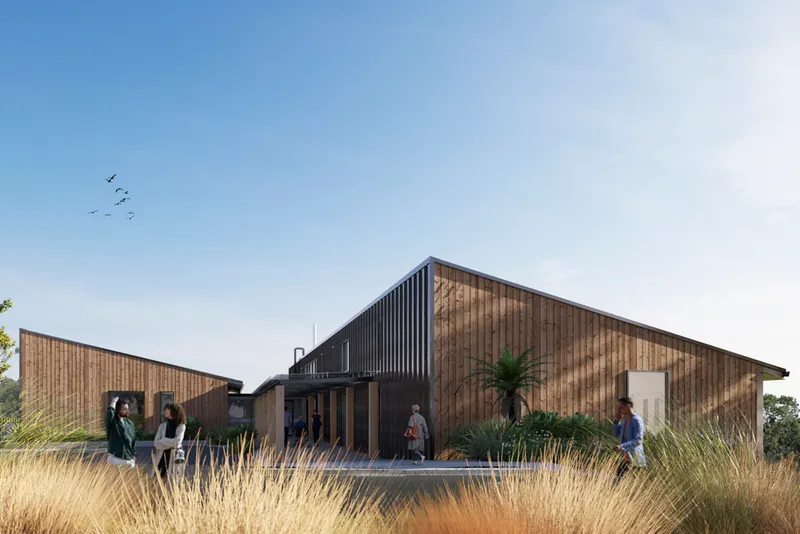NewsStudio
Webinar: The embodied carbon challenge. Where less is definitely more.

Recently, Warren and Mahoney hosted the first of our Dialogue Webinar Series. With a focus on embodied carbon, participants heard from subject matter experts Fiona Short, Simon Topliss and Emily Newmarch on the progress we as an organisation and as an industry are already making - and where we can strive harder to maximise the impact we can have on the climate crisis.
Our speakers agreed there is no single more pressing issue for our society right now than global warming and the impact of carbon. Global warming is accelerating with buildings currently responsible for 39% of global energy related carbon emissions. This is only growing.
Fiona Short, Principal, architect and Group Sustainability Lead, says population growth is putting pressure on our ecosystem. “To accommodate the largest wave of urban growth in human history, we expect 230 billion sqm of new floor area to be added to the global building stock. This is the equivalent of adding an entire New York City to the world, every month, for 40 years.”
Luckily there are clear actions we can take to drive more sustainable solutions. Fiona says the equation for net zero carbon design is something all designers need to become familiar with and keep front of mind at the outset of projects.
“Zero is aspirational and it’s not likely to be the result of most projects today, or even tomorrow - but we know that the biggest chance for carbon reduction is at the beginning and diminishes as a project progresses.
“For Net Zero, we need a new set of tools, talent and workflow to extract and understand the equations and numbers of our designs, and realise the possibilities that lie within those numbers,” says Short.
After exploring many tools on the market, Warren and Mahoney adopted One Click LCA which is a global leader and provider of Life Cycle Assessment software. It enables users to measure the magnitude of carbon emissions, as part of their design process.
Emily Newmarch, a low carbon design specialist and PhD Candidate at Victoria University of Wellington says there are a few important considerations to bring low carbon aspirations to life.
“Carbon emissions occur over the full life cycle of a building. These include upfront emissions released today from the extraction of raw materials, the manufacturing of products and the construction of buildings and future emissions that we produce over time.
“The emissions we emit this decade are crucial to limiting global warming to 1.5 degrees, before we start to see an increasing amount of irreversible and uncontrollable climate degeneration. Put simply, it won’t matter in 2070 if the building is 100% recyclable if we’re underwater.”
Newmarch reassured the audience that there are several design strategies that can be adopted to reduce the embodied carbon of a project, starting with designing lighter, selecting products with less carbon per unit of material and designing with less today, valuing simplicity over complexity, dematerialisation and simply asking ‘do we need it?’ and ‘does it add value?’.
"We also need to consider how we can reduce the need for replacement and energy intensive maintenance over the life of the building using durability and quality finishes."
Simon Topliss, a Principal in our Melbourne Studio says using mass timber in construction is another effective design strategy which can limit embodied carbon in the built form.
“Timber is definitely the hottest new kid on the block in sustainable building and the numbers suggest that it is going to play a major role in construction over the coming years.
“According to a recent report by the US Forest Business network, the number of new mass timber buildings constructed globally is expected double every two years until 2034."
Not only does timber has a significantly lower embodied carbon footprint than comparative steel and concrete structures but it has great potential around design for manufacturer and assembly.
Simon says that in designing more environmentally friendly buildings there will be specific considerations for every project, “There are design strategies that can create better carbon outcomes on all projects, no matter the constraints and it’s architects collective responsibility to bring these to life.
“Technology can empower the process. We don’t have all the answers, but we are committed to working with our clients and the industry, to drive better outcomes every chance we can get.”
To learn more, view Dialogue EP01: The Embodied Carbon Challenge here, or click on the video below.